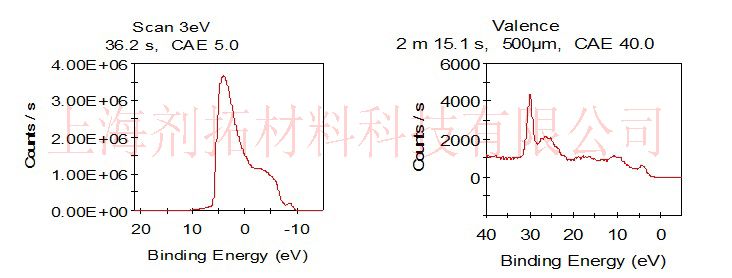Ultraviolet Photoelectron Spectroscopy (UPS) uses ultraviolet light as the excitation source. The excitation source has relatively low photon energy, generated by the de-excitation of excited atoms or ions. The most commonly used low-energy photon sources are He I and He II. UPS is primarily used to investigate the valence electron structure of gas-phase atoms, molecules, and adsorbed molecules.
Principle
Based on Einstein's photoelectric law for free molecules and atoms:(E_K = h\nu - E_B - \Phi_{sp}) where (h\nu) is the incident photon energy (known value), (E_K) is the kinetic energy of emitted photoelectrons (measured value), (E_B) is the binding energy of inner or valence shell bound electrons (calculated value), and (\Phi_{sp}) is the work function of the spectrometer (known value, typically ~4 eV). Since the excitation source energy is much lower than X-rays, photogenerated electrons originate only from the very shallow sample surface (~10 Å), reflecting information about electron interactions near the Fermi level, i.e., valence electrons.
Instrument Model and Technical Parameters
- Instrument Model: Thermo Scientific K-Alpha
- Technical Parameters:
-
- Ion source: 100–4000 eV
-
- Beam spot diameter: 1–10 mm
-
- Sputtering rate range: 0.1–50 nm/min
-
- Sampling depth: Metal 0.5–2 nm, inorganic materials 1–3 nm, organic materials 3–10 nm
Sample Submission Requirements and Notes
- Solid powder: Uniform and dry, particle size < 70 μm (passed through a 200-mesh sieve), mass ≥ 100 mg.
- Bulk, metal, and film samples: Length and width < 10 mm, height < 5 mm.
- Samples with volatile components or oily contaminants must be pre-cleaned.
- Magnetic samples must be declared in advance to avoid equipment damage.
Testing Examples

Reference Standards
- ASTM D4824-18 "Standard Test Method for Acid and Base Sites on Catalysts Using Temperature Programmed Desorption"
- ISO 15370:2000 "Catalysts - Determination of reducible species and their reducibility by temperature-programmed reduction
